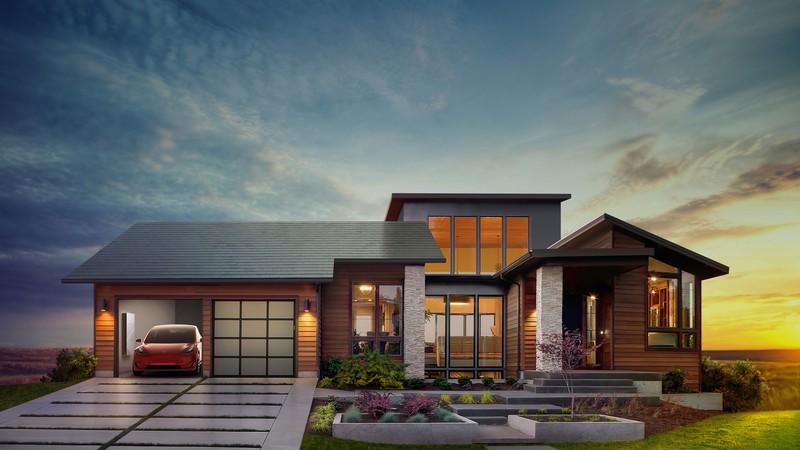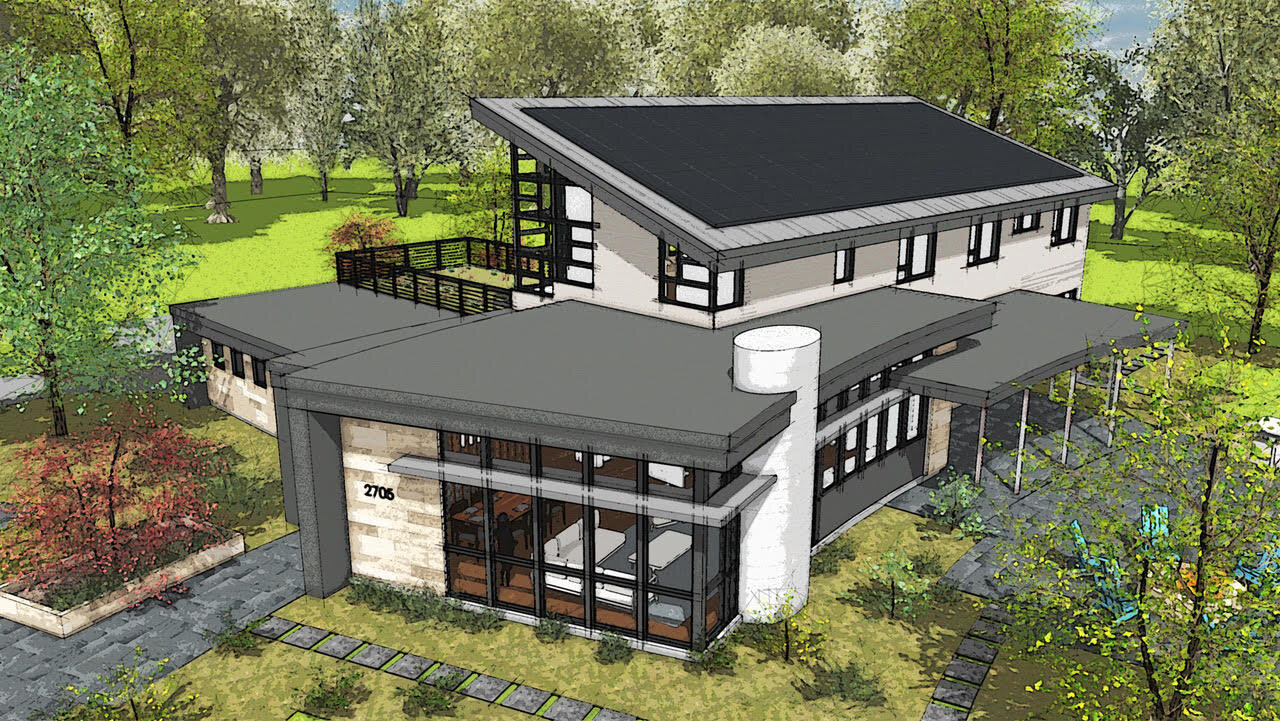Tesla Homes With Solar-Powered Living Spaces Fully Furnished House Available For Purchase
The future of tiny home architecture is an intriguing blend of sustainability, innovation, and practicality. Many people are more and more recognizing the benefits of residing in smaller spaces, resulting in a growing movement targeted on tiny homes. These structures not solely offer a simplified life-style but in addition a extra environmentally acutely aware way of life.
Tiny homes symbolize a departure from conventional architectural designs, emphasizing minimalism and multifunctionality. The format of those homes is often cleverly designed to maximise space whereas providing important facilities. Expect to see even more inventive options, like foldable furniture and expandable living areas, as architects innovate to fulfill the needs of their clients.
Tesla House Prices Museum Dedicated To Inventor's Legacy
Sustainability plays a pivotal position in the method forward for tiny home architecture. By using eco-friendly supplies and energy-efficient applied sciences, these homes can considerably cut back their carbon footprint. Solar panels, rainwater collection techniques, and sustainable constructing materials are just a few examples of how future designs will prioritize environmental responsibility.
Technological advancements will additional revolutionize tiny home architecture. Smart home technology is changing into more and more accessible, which means extra tiny homes will incorporate features like automated lighting, smart thermostats, and safety systems. These improvements not only improve consolation but in addition allow owners to handle their resources more effectively.
The design philosophy of tiny homes emphasizes an efficient use of house, which can result in a discount in construction costs. As extra people search affordable housing choices, tiny homes provide a compelling resolution. The compact nature of these residences means they'll often be built on smaller plots of land, making housing extra accessible in city settings.
Community-oriented designs are expected to achieve traction in the tiny home motion. Cohousing preparations and tiny home villages are emerging as viable options to conventional neighborhoods. These communities not only foster a sense of belonging but additionally encourage shared sources, which may lead to extra sustainable residing practices.
Tesla Homes With Renewable Power Solutions Catching Fire In Flooded Garage
Regulatory changes are additionally anticipated within the tiny home market. As local governments acknowledge the advantages of tiny homes, more municipalities might amend zoning laws to accommodate these buildings. This shift could improve alternatives for tiny home dwellers and help tackle housing shortages in varied regions.
While aesthetics have at all times been vital in architecture, the future of tiny home design will likely see an emphasis on individuality. Homeowners are on the lookout for methods to precise their distinctive identities, resulting in a diverse array of types and finishes. Expect to see extra personalized touches, from inventive facades to interior decor that showcases private pursuits.
The psychological benefits of tiny dwelling have gotten extra recognized. Smaller spaces can promote mindfulness and ease, encouraging occupants to understand what they have. This way of life shift can result in decreased stress levels and an general sense of well-being, making it an interesting possibility for many.

Future tiny homes may also impact urban planning. They can provide solutions for the inexpensive housing disaster while sustaining a small footprint. Integrating tiny homes into current neighborhoods could revitalize underused areas and supply new living options without significantly altering the landscape.
Tesla Homes With Energy Storage House On Fire During Hurricane Event
Moreover, the adaptability of tiny homes makes them appropriate for numerous climates and environments. Designs may be customized to resist extreme climate situations or to harmonize with local cultural aesthetics. This flexibility will enable tiny homes to thrive in diverse settings, from urban facilities to rural landscapes.
The mental shift towards minimalism aligned with tiny home living might encourage younger generations to prioritize experiences over possessions. This development may alter shopper behavior, leading to a extra sustainable method to living that values quality over amount. Future tiny home architecture will likely reflect this ethos, emphasizing considerate design and intentional residing.
As the tiny home movement continues to evolve, collaboration among architects, engineers, and sustainability specialists will turn out to be essential. Their combined efforts will result in progressive solutions that address the unique challenges of tiny home residing. By leveraging experience from a number of fields, the longer term designs will probably be more efficient and more harmonious with nature.
In conclusion, the means ahead for tiny home architecture looks promising and multifaceted. It highlights a transformative shift toward sustainability, group, and individuality. As this motion features momentum, count on to see an increasing number of innovative designs that challenge typical norms and redefine what it means to stay small.
Tesla Homes With Solar-Powered Living Spaces Upcoming Plans For New Battery Systems
- Emphasis on sustainability will result in the combination of eco-friendly materials, such as reclaimed wood and bamboo, inside tiny home designs.
- Advances in modular building methods will allow quicker assembly and customization, allowing owners to create unique spaces tailor-made to their wants.
- Smart home know-how will turn into a staple in tiny homes, optimizing vitality use and enhancing overall comfort via connected gadgets.
- Urban areas might even see an increase in tiny home communities, selling social interactions and a sense of belonging among residents with similar life.
- Innovative storage solutions will be crucial, utilizing vertical area and multi-functional furnishings to maximise residing areas with out sacrificing comfort.
- Off-grid capabilities will gain reputation, with tiny homes increasingly that includes solar panels and rainwater assortment techniques for self-sufficiency.
- Designs will probably prioritize optimum airflow and pure lighting, integrating large windows and open floor plans to create a sense of space despite smaller footprints.
- Accessibility in tiny home architecture will be prioritized, accommodating diverse needs and making these spaces inclusive for all individuals.
- Innovations in 3D printing technology may revolutionize the construction of tiny homes, allowing for rapid prototyping and cost-effective building solutions.
- The future may see regulatory shifts that facilitate zoning for tiny homes, making them a viable affordable housing option in urban settings.undefinedWhat are the advantages of tiny home architecture for sustainable living?
Tiny home architecture promotes sustainability by minimizing useful resource consumption and land use. With smaller footprints, these homes usually use energy-efficient supplies and designs, lowering general power consumption and promoting eco-friendly lifestyles.
How will tiny homes have an effect on zoning laws within the future?
Tesla Homes With Next-Gen Technology Upcoming Plans For New Battery Systems

As the recognition of tiny homes grows, many native governments are reconsidering zoning laws to accommodate these buildings. Future rules could evolve to permit more flexible zoning that supports tiny home communities, recognizing their value in addressing housing shortages (Tesla Homes For Clean Energy Living).
What innovations are rising in tiny home design?
Innovations embrace modular designs, good home technology, and multifunctional furnishings that maximizes space efficiency. Designers are more and more incorporating renewable energy options, such as solar panels, to reinforce sustainability and self-sufficiency in tiny homes.
How can tiny homes contribute to neighborhood development?
Tesla Homes With Integrated Solar Technology Modern Open Concept House Design
Tiny homes can foster community by creating close-knit neighborhoods and various living preparations. They can provide inexpensive housing options and help shared sources among residents, leading to stronger communal ties and collaborative residing experiences.
What position does technology play in tiny home architecture?
Tesla Homes For Green Energy Enthusiasts Modern Open Concept House Design
Technology plays a major function in tiny home architecture through the integration check out this site of good home functionalities, power management techniques, and advanced building supplies. These innovations optimize house and improve the residing experience, making tiny homes extra adaptable and user-friendly.
Will tiny homes be a solution to housing affordability crises?
Affordable Tesla Homes House That Comes With A Battery
Tiny homes present a viable solution to housing affordability crises by providing lower-cost alternate options to conventional housing. Their smaller size reduces construction and maintenance costs, making them extra accessible for these struggling to search out affordable housing choices.
How can individuals finance tiny home projects?
Options for financing tiny home projects embody personal loans, tiny home-specific mortgages, and crowdfunding. Additionally, some local governments provide grants or incentives for sustainable housing, making it easier for people to invest in tiny home builds.
What environmental impact do tiny homes have compared to traditional homes?
Tesla Homes With Zero Energy Bills Upcoming Plans For New Battery Systems
Tiny homes usually have a lower environmental impact than traditional homes as a outcome of their decreased materials usage, smaller energy wants, and potential for renewable vitality integration. They promote a minimalist way of life that encourages reduced consumption and waste.
What are the challenges of living in a tiny home?
(Tesla Homes With Solar Technology Integration)
Challenges include space limitations, zoning restrictions, and potential storage issues. Residents may need to adapt their lifestyles to prioritize simplicity and minimalism, which can be difficult however in the end results in a extra intentional way of life.
Tesla Homes For Clean Energy Living House On Fire During Hurricane Event
Can tiny homes be customized?
Tesla Homes For Clean, Green Living.
Yes, many tiny homes are customizable to suit individual preferences and wishes. Builders usually his comment is here offer a variety of design choices, allowing householders to select layouts, finishes, and features that align with their lifestyle whereas maximizing effectivity.